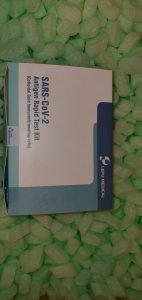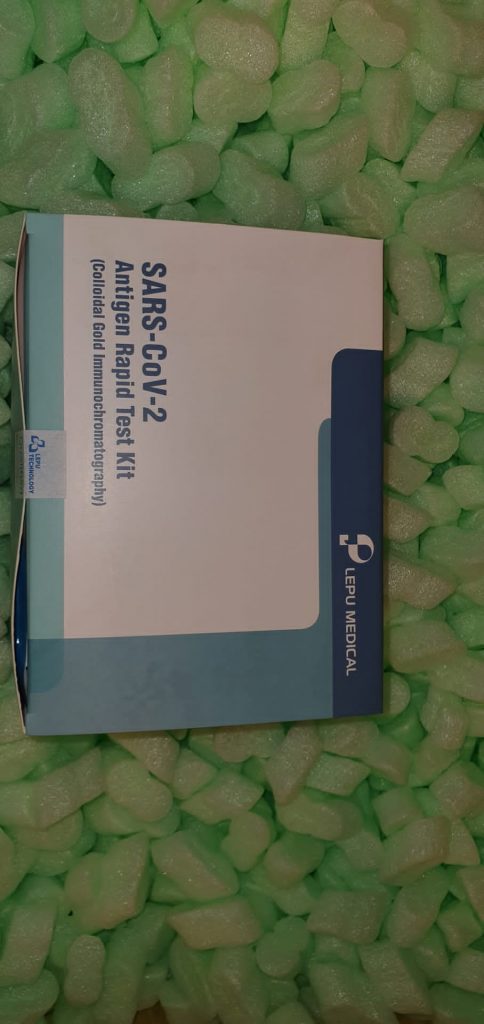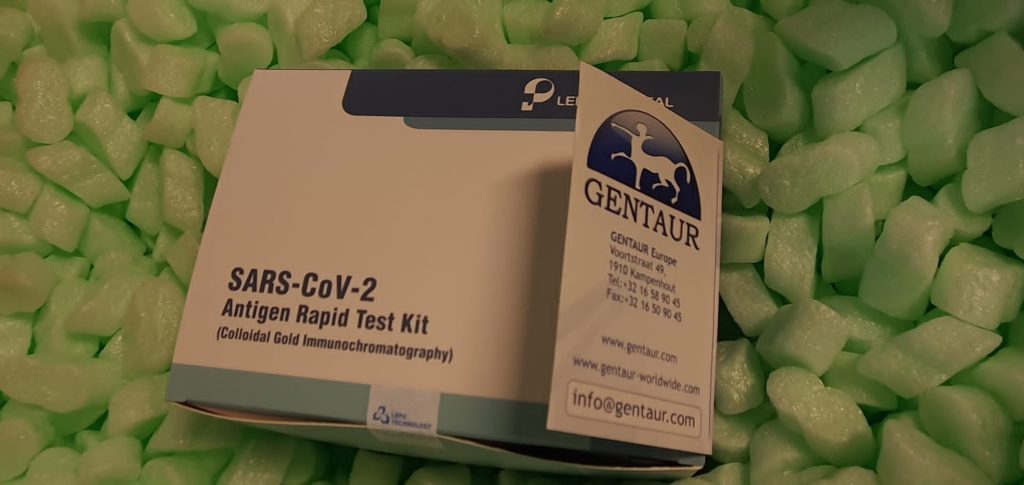Recent research have demonstrated that radiotherapy is ready to induce anti-tumor immune responses along with mediating direct cytotoxic results. Cancer-associated fibroblasts (CAFs) are central constituents of the tumor stroma and take part actively in tumor immunoregulation. However, the capability of CAFs to affect immune responses within the context of radiotherapy continues to be poorly understood. This research was undertaken to find out whether or not ionizing radiation alters the CAF-mediated immunoregulatory results on pure killer (NK) cells. CAFs had been remoted from freshly resected non-small cell lung most cancers tissues, whereas NK cells had been ready from peripheral blood of wholesome donors.
Functional assays to review NK cell immune activation included proliferation charges, expression of cell floor markers, secretion of immunomodulators, cytotoxic assays, in addition to manufacturing of intracellular activation markers reminiscent of perforin and granzyme B. Our information present that CAFs inhibit NK cell activation by lowering their proliferation charges, the cytotoxic capability, the extent of degranulation, and the floor expression of stimulatory receptors, whereas concomitantly enhancing floor expression of inhibitory receptors.
Radiation delivered as single high-dose or in fractioned regimens didn’t reverse the immunosuppressive options exerted by CAFs over NK cells in vitro, regardless of triggering enhanced floor expression of a number of checkpoint ligands on irradiated CAFs. In abstract, CAFs mediate noticeable immune inhibitory results on cytokine-activated NK cells throughout co-culture in a donor-independent method. However, ionizing radiation doesn’t intervene with the CAF-mediated immunosuppressive results.
To study the cross-talk between NK cells and DCs in HCV an infection, we remoted monocytes and NK cells from 20 persistent HCV sufferers and 20 wholesome controls. Monocytes had been used to generate immature DCs which had been pulsed with HCV peptides (core, NS3-NS4 and NS5). Four totally different co-cultures had been carried out: E1: each DCs and NK cells had been from a persistent HCV affected person, E2: NK cells from a wholesome management co-cultured with DCs from a persistent HCV affected person, E3:
NK cells from a persistent HCV affected person co-cultured with DCs cells from a wholesome management and E4: each DCs and NK cells had been from a wholesome management. Using stream cytometry, we assessed the impact of those totally different co-cultures on ranges of maturation markers on DCs and ranges of activation/inhibition markers on NK cells. Results confirmed that peptide pulsed HCV DCs confirmed a maturation defect within the type of decreased HLA-DR, decreased CD86 and elevated CD83 expression particularly when co-cultured with HCV NK.
This was primarily as a result of core peptide pulsing and to a lesser extent as a result of NS5 pulsing whereas there was no impact with NS3-NS4 pulsing. Alternatively, HCV NK cells upregulated each activation and inhibition markers particularly when co-cultured with wholesome DCs. Compared to E2, E1 resulted in greater apoptosis of each NK cells and DCs with the proportion of NK apoptosis greater than that of DCs. Taken collectively, the information point out that HCV an infection impairs NK-DC cross-talk which can be a number one trigger in viral persistence and chronicity. This article is protected by copyright. All rights reserved.
Immune checkpoint molecules in pure killer cells as potential targets for most cancers immunotherapy
Recent research have demonstrated the potential of pure killer (NK) cells in immunotherapy to deal with a number of sorts of most cancers. NK cells are innate lymphoid cells that play important roles in tumor surveillance and management that effectively kill the tumor and don’t require the foremost histocompatibility complicated. The discovery of the NK’s potential as a promising therapeutic goal for most cancers is a reduction to oncologists as they face the problem of elevated chemo-resistant cancers. NK cells present nice potential towards stable and hematologic tumors and have progressively proven promise as a therapeutic goal for most cancers immunotherapy. The effector function of those cells is reliant on the steadiness of inhibitory and activating alerts.
Understanding the function of assorted immune checkpoint molecules within the exhaustion and impairment of NK cells when their inhibitory receptors are excessively expressed is especially necessary in most cancers immunotherapy research and scientific implementation. Emerging immune checkpoint receptors and molecules have been discovered to mediate NK cell dysfunction within the tumor microenvironment; this has introduced up the necessity to discover additional further NK cell-related immune checkpoints which may be exploited to reinforce the immune response to refractory cancers. Accordingly, this evaluate will give attention to the current findings in regards to the roles of immune checkpoint molecules and receptors within the regulation of NK cell operate, in addition to their potential software in tumor immunotherapy.
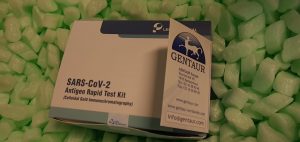
Natural Killer Cells in Immunotherapy: Are We Nearly There?
atural killer (NK) cells are potent anti-tumor and anti-microbial cells of our innate immune system. They are geared up with an unlimited array of receptors that acknowledge tumor cells and different pathogens. The innate immune exercise of NK cells develops sooner than the adaptive one carried out by T cells, and research counsel an necessary immunoregulatory function for every inhabitants towards the opposite.
The affiliation, noticed in acute myeloid leukemia sufferers receiving haploidentical killer-immunoglobulin-like-receptor-mismatched NK cells, with induction of full remission was the determinant to start an growing variety of scientific research administering NK cells for the therapy of most cancers sufferers. Unfortunately, though transfused NK cells demonstrated security, their noticed efficacy was poor.
 Tapered Micro Tips |
|
0-120-0007 |
Biologics |
3 mm |
EUR 344 |
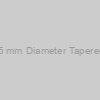 Tapered Micro Tips 5 mm Diameter Tapered Titanium Micro Tip |
|
0-120-0008 |
Biologics |
5 mm |
EUR 358 |
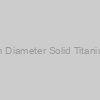 10 mm Diameter Solid Titanium Tip |
|
0-120-0009 |
Biologics |
10 mm |
EUR 504 |
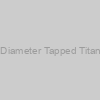 13 mm Diameter Tapped Titanium Tip |
|
0-120-0010 |
Biologics |
13 mm |
EUR 595 |
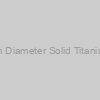 13 mm Diameter Solid Titanium Tip |
|
0-120-0011 |
Biologics |
13 mm |
EUR 533 |
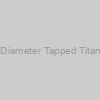 19 mm Diameter Tapped Titanium Tip |
|
0-120-0012 |
Biologics |
19 mm |
EUR 639 |
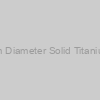 19 mm Diameter Solid Titanium Tip |
|
0-120-0013 |
Biologics |
19 mm |
EUR 570 |
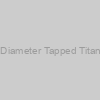 25 mm Diameter Tapped Titanium Tip |
|
0-120-0014 |
Biologics |
25 mm |
EUR 682 |
 25 mm Diameter Solid Titanium Tip |
|
0-120-0015 |
Biologics |
25 mm |
EUR 614 |
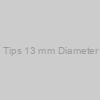 Flat Replaceable Tips 13 mm Diameter Flat Titanium Tip |
|
0-120-0016 |
Biologics |
13 mm |
EUR 86 |
|
Description: use with corresponding Tapped Tips and Tapped Extender Tips |
 Flat Replaceable Tips 19 mm Diameter Flat Titanium Tip |
|
0-120-0017 |
Biologics |
19 mm |
EUR 92 |
|
Description: use with corresponding Tapped Tips and Tapped Extender Tips |
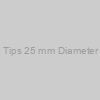 Flat Replaceable Tips 25 mm Diameter Flat Titanium Tip |
|
0-120-0018 |
Biologics |
25 mm |
EUR 100 |
|
Description: use with corresponding Tapped Tips and Tapped Extender Tips |
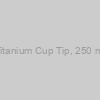 Titanium Cup Tip, 250 ml |
|
0-120-0019 |
Biologics |
250 ml |
EUR 1377 |
|
Description: includes Interface Washers |
) Microtube Tray, 8 Position (for 250 ml Cup Tip) |
|
0-120-0021 |
Biologics |
each |
EUR 113 |
|
Description: includes Interface Washers |
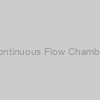 Continuous Flow Chamber |
|
0-120-0026 |
Biologics |
each |
EUR 774 |
|
Description: includes Interface Washers |
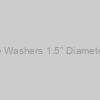 Interface Washers 1.5” Diameter, 5/Pkg |
|
0-120-003 |
Biologics |
1.5'' Diameter |
EUR 31 |
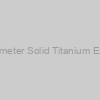 13 mm Diameter Solid Titanium Extender Tip |
|
0-120-0032 |
Biologics |
13 mm |
EUR 301 |
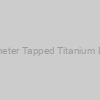 13 mm Diameter Tapped Titanium Extender Tip |
|
0-120-0033 |
Biologics |
13 mm |
EUR 362 |
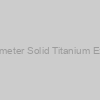 19 mm Diameter Solid Titanium Extender Tip |
|
0-120-0034 |
Biologics |
19 mm |
EUR 315 |
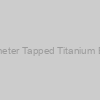 19 mm Diameter Tapped Titanium Extender Tip |
|
0-120-0035 |
Biologics |
19 mm |
EUR 375 |
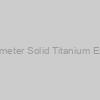 25 mm Diameter Solid Titanium Extender Tip |
|
0-120-0036 |
Biologics |
25 mm |
EUR 328 |
 25 mm Diameter Tapped Titanium Extender Tip |
|
0-120-0037 |
Biologics |
25 mm |
EUR 389 |
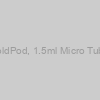 KoldPod, 1.5ml Micro Tube |
|
0-120-0038 |
Biologics |
1.5 ml |
EUR 152 |
|
Description: Thermo conductive tube pods |
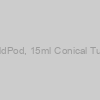 KoldPod, 15ml Conical Tube |
|
0-120-0039 |
Biologics |
15 ml |
EUR 275 |
|
Description: Thermo conductive tube pods |
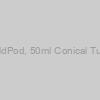 KoldPod, 50ml Conical Tube |
|
0-120-0040 |
Biologics |
50 ml |
EUR 290 |
|
Description: Thermo conductive tube pods |
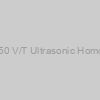 Model 150 V/T Ultrasonic Homogenizer |
|
0-121-0002 |
Biologics |
210-240V/50-60Hz |
EUR 2920 |
|
|
|
Description: Delivers up to 150 Watts of ultrasonic power to the Titanium Tip. The Timer and Duty Cycle function increase preciosion in sample processing processing. |
 Model 300 V/T Ultrasonic Homogenizer |
|
0-122-0002 |
Biologics |
210-240V/50-60Hz |
EUR 3520 |
|
|
|
Description: Delivers up to 300 Watts of ultrasonic power to the Titanium Tip. The Timer and Duty Cycle function increase preciosion in sample. |
 SONABOZ Sound Abating Chamber |
|
0-125-0001 |
Biologics |
each |
EUR 1020 |
|
Description: Reduces cavitational sound emitted during processing. |
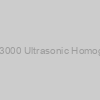 Model 3000 Ultrasonic Homogenizer |
|
0-127-0002 |
Biologics |
210-240V/50-60Hz |
EUR 4120 |
|
|
|
Description: Delivers up to 300 Watts of ultrasonic power to the Titanium Tip and includes an intergrated Sound Abating Chmaber to reduce cavitational sound emitted during processing. The Timer and Duty Cycle function increase preciosion in sample. |
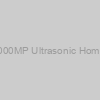 Model 3000MP Ultrasonic Homogenizer |
|
0-128-0002 |
Biologics |
210-240V/50-60Hz |
EUR 4720 |
|
|
|
Description: Delivers up to 300 Watts of ultrasonic power to the Titanium Tip with preciosion control from a microprocessor and a graphical user interface displayed on a large (145 mm) LCD display. The integrated Sound Abating Chamber reduces cavitational sound emitted during processing. |
 OMNICON® Zone Reader, 210-240V/50-60Hz |
|
0-131-0002 |
Biologics |
210-240V/50-60Hz |
EUR 35200 |
|
|
|
Description: Designed to Perform multi-plate Assays on round 90/100mm Petri Dishes. The integrated LED illumination system provides transmitted light for brightfield and darkfield illumination of transparent media. |
 OMNI-Noculator Peni Cylinder Filler, 210-240V/50-60Hz |
|
0-134-0002 |
Biologics |
210-240V/50-60Hz |
EUR 32200 |
|
|
|
Description: A robotic liquid handling system designed to dispense Peni Cylinders and fill Peni Cylinders with the corresponding antibiotic liquid sample. |
 Peni Cylinder Dispenser with Manual Hopper |
|
0-144-0002 |
Biologics |
each |
EUR 5406 |
|
|
|
Description: Dispenser can be configured to dispense 4 or 6 Peni Cylinders onto a petri dish. |
 Peni Cylinder Dispenser with Motorized Hopper, 100-240V/50-60Hz |
|
0-144-0003 |
Biologics |
100-240V/50-60Hz |
EUR 6254 |
|
Description: The motorized hopper can be configured to dispense 4 or 6 Peni Cylinders onto a petri Dispenser can be disassembled for disinfection. |
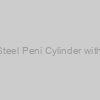 Stainless Steel Peni Cylinder with Flat Face |
|
0-144-0005 |
Biologics |
6mm I.D. x 8mm O.D. x 10mm Long |
EUR 399 |
|
Description: sold in packages of 100 pieces |
 Stainless Steel Peni Cylinder with Chamfered Face |
|
0-144-0006 |
Biologics |
6mm I.D. x 8mm O.D. x 10mm Long |
EUR 412 |
|
Description: sold in packages of 100 pieces |
) Custom development of ELISAs for other species or antibody isotypes not listed in the catalog. Custom testing of samples for IgG/IgM/IgA or total (IgG+IgM+IgA) |
|
000-CUS |
Alpha Diagnostics |
Custom |
EUR 602 |
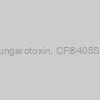 Alpha-Bungarotoxin, CF®405S, 500 ug |
|
00002 |
Biotium |
1UG |
EUR 527 |
|
|
|
Description: Alpha-bungarotoxin from Krait snake venom (Bungarus multicinctus) |
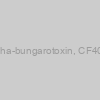 Alpha-bungarotoxin, CF405s |
|
00002 |
Cusabio |
500uG |
EUR 594 |
|
Description: Minimum order quantity: 1 unit of 500uG |
 Alpha-Bungarotoxin, CF®405S, 500 ug |
|
00002-1 |
Biotium |
EA |
EUR 527 |
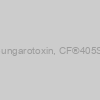 Alpha-Bungarotoxin, CF®405S 100ug |
|
00002-100ug |
Biotium |
100uG |
EUR 132 |
|
|
|
Description: Alpha-bungarotoxin from Krait snake venom (Bungarus multicinctus) |
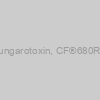 Alpha-Bungarotoxin, CF®680R, 500 ug |
|
9-00003 |
Biotium |
-
Ask for price
-
Ask for price
|
|
|
|
|
Description: Alpha-bungarotoxin from Krait snake venom (Bungarus multicinctus) |
 Alpha-Bungarotoxin, CF®680R, 500 ug |
|
00003-1 |
Biotium |
EA |
EUR 527 |
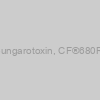 Alpha-Bungarotoxin, CF®680R 100ug |
|
9-00003 |
Biotium |
-
Ask for price
-
Ask for price
|
|
|
|
|
Description: Alpha-bungarotoxin from Krait snake venom (Bungarus multicinctus) |
 Alpha-Bungarotoxin, CF®640R, 500 ug |
|
9-00004 |
Biotium |
-
Ask for price
-
Ask for price
|
|
|
|
|
Description: Alpha-bungarotoxin from Krait snake venom (Bungarus multicinctus) |
 Alpha-Bungarotoxin, CF®640R, 500 ug |
|
00004-1 |
Biotium |
EA |
EUR 527 |
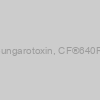 Alpha-Bungarotoxin, CF®640R 100ug |
|
9-00004 |
Biotium |
-
Ask for price
-
Ask for price
|
|
|
|
|
Description: Alpha-bungarotoxin from Krait snake venom (Bungarus multicinctus) |
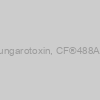 Alpha-Bungarotoxin, CF®488A, 500 ug |
|
9-00005 |
Biotium |
-
Ask for price
-
Ask for price
|
|
|
|
|
Description: Alpha-bungarotoxin from Krait snake venom (Bungarus multicinctus) |
 Alpha-Bungarotoxin, CF®488A, 500 ug |
|
00005-1 |
Biotium |
EA |
EUR 527 |
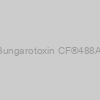 Alpha-Bungarotoxin CF®488A 100ug |
|
9-00005 |
Biotium |
-
Ask for price
-
Ask for price
|
|
|
|
|
Description: Alpha-bungarotoxin from Krait snake venom (Bungarus multicinctus) |
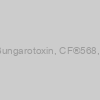 Alpha-Bungarotoxin, CF®568, 500 ug |
|
9-00006 |
Biotium |
-
Ask for price
-
Ask for price
|
|
|
|
|
Description: Alpha-bungarotoxin from Krait snake venom (Bungarus multicinctus) |
 Alpha-Bungarotoxin, CF®568, 500 ug |
|
00006-1 |
Biotium |
EA |
EUR 527 |
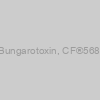 Alpha-Bungarotoxin, CF®568 100ug |
|
9-00006 |
Biotium |
-
Ask for price
-
Ask for price
|
|
|
|
|
Description: Alpha-bungarotoxin from Krait snake venom (Bungarus multicinctus) |
 Alpha-Bungarotoxin, CF®594, 500 ug |
|
9-00007 |
Biotium |
-
Ask for price
-
Ask for price
|
|
|
|
|
Description: Alpha-bungarotoxin from Krait snake venom (Bungarus multicinctus) |
 Alpha-Bungarotoxin, CF®594, 500 ug |
|
00007-1 |
Biotium |
EA |
EUR 527 |
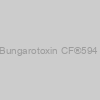 Alpha-Bungarotoxin CF®594 100ug |
|
9-00007 |
Biotium |
-
Ask for price
-
Ask for price
|
|
|
|
|
Description: Alpha-bungarotoxin from Krait snake venom (Bungarus multicinctus) |
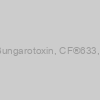 Alpha-Bungarotoxin, CF®633, 500 ug |
|
9-00009 |
Biotium |
-
Ask for price
-
Ask for price
|
|
|
|
|
Description: Alpha-bungarotoxin from Krait snake venom (Bungarus multicinctus) |
 Alpha-Bungarotoxin, CF®633, 500 ug |
|
00009-1 |
Biotium |
EA |
EUR 527 |
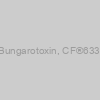 Alpha-Bungarotoxin, CF®633 100ug |
|
9-00009 |
Biotium |
-
Ask for price
-
Ask for price
|
|
|
|
|
Description: Alpha-bungarotoxin from Krait snake venom (Bungarus multicinctus) |
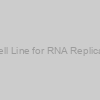 SARS-CoV-2 Indicator Cell Line for RNA Replication - GFP Reporter only |
|
0001-PP-001 |
IBT Bioservices |
1 cell line (can order x amount) |
EUR 12000 |
|
Description: SARS-CoV-2 GFP reporter cell line using HEK293T (ACE2/TMPRSS2) cells |
 Alpha-Bungarotoxin, 1 mg |
|
00010-1 |
Biotium |
1MG |
EUR 193 |
|
|
|
Description: Alpha-bungarotoxin from Krait snake venom (Bungarus multicinctus) |
 Alpha-Bungarotoxin, 1 mg |
|
00010-1-1 |
Biotium |
EA |
EUR 193 |
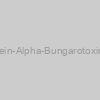 Fluorescein-Alpha-Bungarotoxin, 500 ug |
|
00011 |
Biotium |
500uG |
EUR 376 |
|
|
|
Description: Alpha-bungarotoxin from Krait snake venom (Bungarus multicinctus) |
 Fluorescein-Alpha-Bungarotoxin, 500 ug |
|
00011-1 |
Biotium |
EA |
EUR 376 |
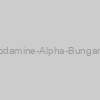 Tetramethylrhodamine-Alpha-Bungarotoxin, 500 ug |
|
00012 |
Biotium |
500uG |
EUR 394 |
|
|
|
Description: Alpha-bungarotoxin from Krait snake venom (Bungarus multicinctus) |
 Tetramethylrhodamine-Alpha-Bungarotoxin, 500 ug |
|
00012-1 |
Biotium |
EA |
EUR 394 |
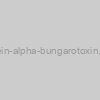 Fluorescein-alpha-bungarotoxin, 10x50ug |
|
00013 |
Biotium |
10ST |
EUR 436 |
|
|
|
Description: Alpha-bungarotoxin from Krait snake venom (Bungarus multicinctus) |
 Fluorescein-alpha-bungarotoxin, 10x50ug |
|
00013-1 |
Biotium |
EA |
EUR 436 |
 Tetramethylrhodamine-A-Bungarotoxin, 10x50 ug |
|
00014 |
Biotium |
10ST |
EUR 494 |
|
|
|
Description: Alpha-bungarotoxin from Krait snake venom (Bungarus multicinctus) |
 Tetramethylrhodamine-A-Bungarotoxin, 10x50 ug |
|
00014-1 |
Biotium |
EA |
EUR 494 |
 Sulforhodamine 101-Alpha-Bungarotoxin, 500 ug |
|
00015 |
Biotium |
500uG |
EUR 494 |
|
|
|
Description: Alpha-bungarotoxin from Krait snake venom (Bungarus multicinctus) |
 Sulforhodamine 101-Alpha-Bungarotoxin, 500 ug |
|
00015-1 |
Biotium |
EA |
EUR 494 |
 Sulforhodamine 101-Alpha-Bungarotoxin, 50 ug |
|
00016 |
Biotium |
10ST |
EUR 560 |
|
|
|
Description: Alpha-bungarotoxin from Krait snake venom (Bungarus multicinctus) |
 Sulforhodamine 101-Alpha-Bungarotoxin, 50 ug |
|
00016-1 |
Biotium |
EA |
EUR 560 |
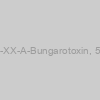 Biotin-XX-A-Bungarotoxin, 500 ug |
|
00017 |
Biotium |
500uG |
EUR 455 |
|
|
|
Description: Alpha-bungarotoxin from Krait snake venom (Bungarus multicinctus) |
 Biotin-XX-A-Bungarotoxin, 500 ug |
|
00017-1 |
Biotium |
EA |
EUR 455 |
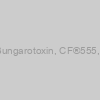 Alpha-Bungarotoxin, CF®555, 500 ug |
|
9-00018 |
Biotium |
-
Ask for price
-
Ask for price
|
|
|
|
|
Description: Alpha-bungarotoxin from Krait snake venom (Bungarus multicinctus) |
 Alpha-Bungarotoxin, CF®555, 500 ug |
|
00018-1 |
Biotium |
EA |
EUR 527 |
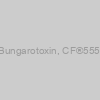 Alpha-Bungarotoxin, CF®555 100ug |
|
9-00018 |
Biotium |
-
Ask for price
-
Ask for price
|
|
|
|
|
Description: Alpha-bungarotoxin from Krait snake venom (Bungarus multicinctus) |
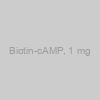 Biotin-cAMP, 1 mg |
|
00020 |
Biotium |
1MG |
EUR 298 |
|
|
|
Description: N/A |
 Biotin-cAMP, 1 mg |
|
00020-1 |
Biotium |
20ST |
EUR 298 |
|
|
|
Description: N/A |
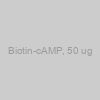 Biotin-cAMP, 50 ug |
|
00020-1-1 |
Biotium |
EA |
EUR 414 |
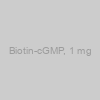 Biotin-cGMP, 1 mg |
|
00021 |
Biotium |
1MG |
EUR 331 |
|
|
|
Description: N/A |
 Biotin-cGMP, 1 mg |
|
00021-1 |
Biotium |
20ST |
EUR 331 |
|
|
|
Description: N/A |
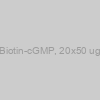 Biotin-cGMP, 20x50 ug |
|
00021-1-1 |
Biotium |
EA |
EUR 447 |
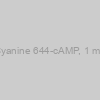 Cyanine 644-cAMP, 1 mg |
|
00022 |
Biotium |
1MG |
EUR 496 |
|
|
|
Description: N/A |
 Cyanine 644-cAMP, 1 mg |
|
00022-1 |
Biotium |
20ST |
EUR 496 |
|
|
|
Description: N/A |
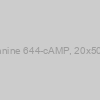 Cyanine 644-cAMP, 20x50 ug |
|
00022-1-1 |
Biotium |
EA |
EUR 647 |
 Fluorescein Methotrexate, Triammonium Salt, 1 mg |
|
00023 |
Biotium |
1MG |
EUR 285 |
|
|
|
Description: N/A |
 Fluorescein Methotrexate, Triammonium Salt, 1 mg |
|
00023-1 |
Biotium |
EA |
EUR 285 |
 Staurosporine |
|
00025 |
Biotium |
100uG |
EUR 100 |
|
|
|
Description: N/A |
 Staurosporine |
|
00025-1 |
Biotium |
EA |
EUR 100 |
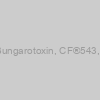 Alpha-Bungarotoxin, CF®543, 500 ug |
|
00026 |
Biotium |
500uG |
EUR 527 |
|
|
|
Description: Alpha-bungarotoxin from Krait snake venom (Bungarus multicinctus) |
 Alpha-Bungarotoxin, CF®543, 500 ug |
|
00026-1 |
Biotium |
EA |
EUR 527 |
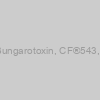 Alpha-Bungarotoxin, CF®543, 100 ug |
|
00026-100ug |
Biotium |
1UG |
EUR 132 |
|
|
|
Description: Alpha-bungarotoxin from Krait snake venom (Bungarus multicinctus) |
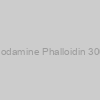 Rhodamine Phalloidin 300U |
|
00027 |
Biotium |
300 |
EUR 364 |
|
|
|
Description: N/A |
 Rhodamine Phalloidin 300U |
|
00027-1 |
Biotium |
EA |
EUR 364 |
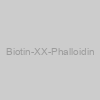 Biotin-XX-Phalloidin |
|
00028 |
Biotium |
100U |
EUR 466 |
|
|
|
Description: N/A |
 Biotin-XX-Phalloidin |
|
00028-1 |
Biotium |
EA |
EUR 466 |
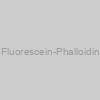 Fluorescein-Phalloidin |
|
00030 |
Biotium |
300U |
EUR 364 |
|
|
|
Description: N/A |
 Fluorescein-Phalloidin |
|
00030-1 |
Biotium |
EA |
EUR 364 |
 Rhodamine 110 Phalloidin |
|
00032 |
Biotium |
300ST |
EUR 364 |
|
|
|
Description: N/A |
 Rhodamine 110 Phalloidin |
|
00032-1 |
Biotium |
EA |
EUR 364 |
 Phalloidin) Sulforhodamine 101 (Texas Red®) Phalloidin |
|
00033 |
Biotium |
300EU |
EUR 364 |
|
|
|
Description: N/A |
 Phalloidin) Sulforhodamine 101 (Texas Red®) Phalloidin |
|
00033-1 |
Biotium |
EA |
EUR 364 |
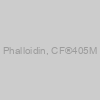 Phalloidin, CF®405M |
|
00034 |
Biotium |
300U |
EUR 482 |
|
|
|
Description: N/A |
 Phalloidin, CF®405M |
|
00034-1 |
Biotium |
EA |
EUR 482 |
 Phalloidin, CF®405M |
|
00034-T |
Biotium |
50U |
EUR 101 |
|
|
|
Description: N/A |
 Phalloidin, CF®405M |
|
00034-T-1 |
Biotium |
EA |
EUR 101 |
 CF®488A-cAMP |
|
00036 |
Biotium |
100ug |
EUR 136 |
|
|
|
Description: N/A |
 CF®488A-cAMP |
|
00036-1 |
Biotium |
EA |
EUR 136 |
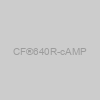 CF®640R-cAMP |
|
00037 |
Biotium |
100ug |
EUR 136 |
|
|
|
Description: N/A |
 CF®640R-cAMP |
|
00037-1 |
Biotium |
EA |
EUR 136 |
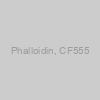 Phalloidin, CF555 |
|
00040 |
Biotium |
300U |
EUR 530.4 |
|
Description: Minimum order quantity: 1 unit of 300U |
 Phalloidin, CF555 |
|
00040-T |
Biotium |
50U |
EUR 159.6 |
|
Description: Minimum order quantity: 1 unit of 50U |
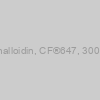 Phalloidin, CF®647, 300 U |
|
00041 |
Biotium |
300U |
EUR 482 |
|
|
|
Description: N/A |
 Phalloidin, CF®647, 300 U |
|
00041-1 |
Biotium |
EA |
EUR 482 |
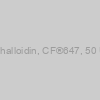 Phalloidin, CF®647, 50 U |
|
00041-T |
Biotium |
50U |
EUR 101 |
|
|
|
Description: N/A |
 Phalloidin, CF®647, 50 U |
|
00041-T-1 |
Biotium |
EA |
EUR 101 |
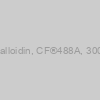 Phalloidin, CF®488A, 300 U |
|
00042 |
Biotium |
300U |
EUR 482 |
|
|
|
Description: N/A |
 Phalloidin, CF®488A, 300 U |
|
00042-1 |
Biotium |
EA |
EUR 482 |
In current years, novel research have emerged, combining NK cells with different immunotherapeutic brokers, reminiscent of monoclonal antibodies, which could enhance scientific efficacy. Moreover, genetically-modified NK cells aimed toward arming NK cells with higher efficacy and persistence have appeared as another choice. Here, we evaluate novel pre-clinical and scientific research printed within the final 5 years administering NK cells as a monotherapy and mixed with different brokers, and we additionally evaluate chimeric antigen receptor-modified NK cells for the therapy of most cancers sufferers.
